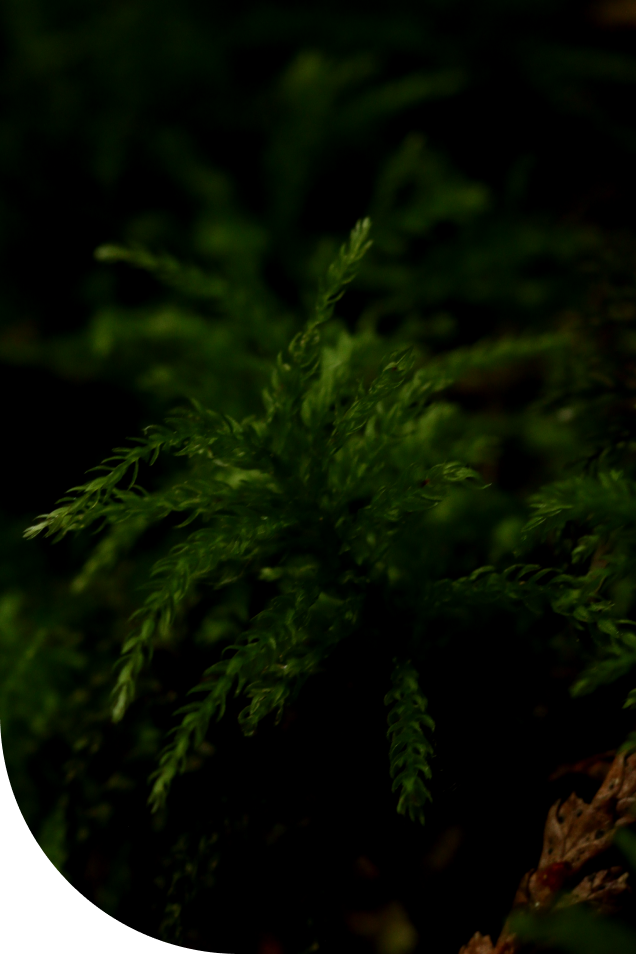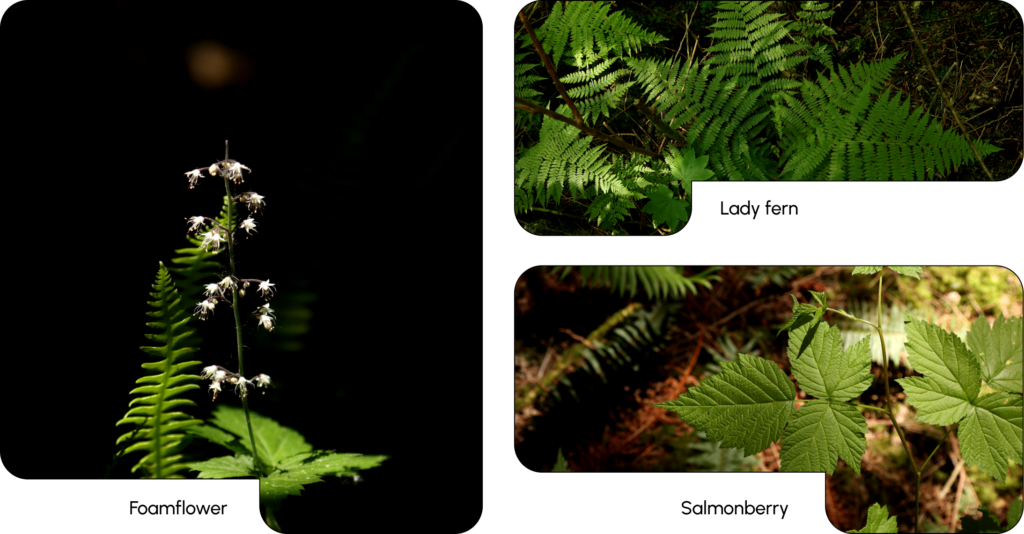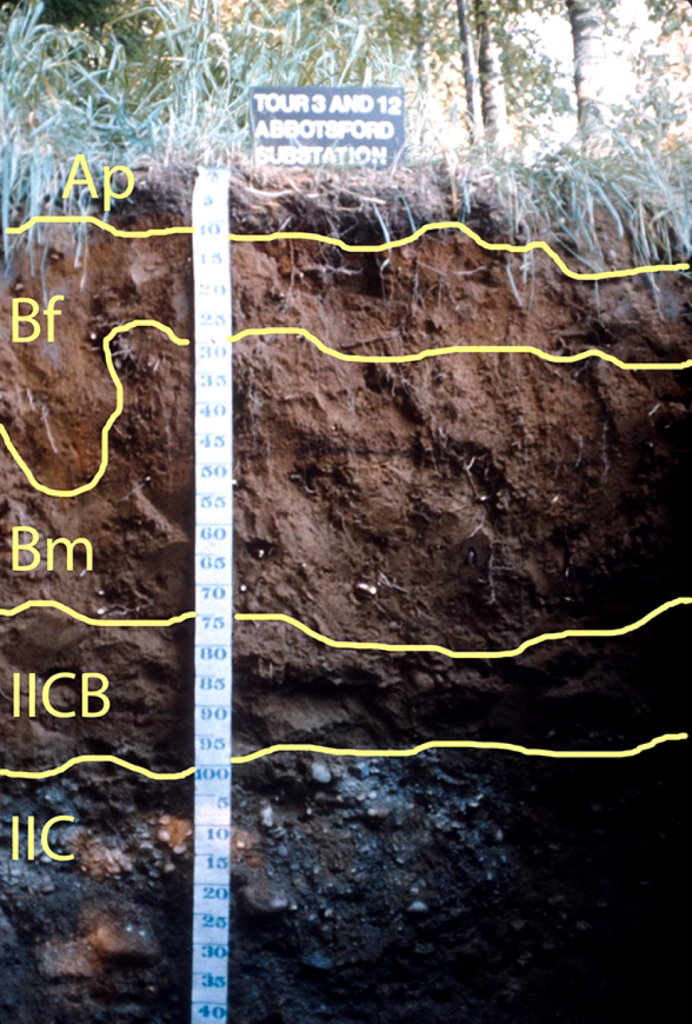Comparison of Soils and Vegetation
Within the Coastal Western Hemlock zone, there are 10 different subzones which capture the diversity of conditions across the region. Each subzone is named based on its proximity to the ocean and its relative level of precipitation. Within each subzone, there are also variations across sites. There are upper slope sites that tend to shed water and be a little bit drier, midslope sites that tend to have moderate moisture (also known as mesic) conditions and lower slope sites that tend to be wetter. We will look at the variation of these conditions across one particular subzone, the Coastal Western Hemlock dry maritime or CWHdm. The CWHdm tends to be more mild and slightly drier than many of the other CWH subzones.
Wetter sites in the CWHdm

On water-receiving sites that occur on imperfectly drained lower slopes you will find the Redcedar — Lady fern plant association. This association includes moist to very moist and nutrient-rich to -very rich sites in the CWHxm and CWHdm subzones. The accumulation of water and nutrients at these lower slope positions creates good conditions for plant growth. Douglas-Fir and Western Red Cedar attain their best growth on these sites. There can be even wetter conditions below these sites in water-collecting areas, which are known as the Redcedar — Sitka spruce — Skunk cabbage association.

The mature forests of the Redcedar — Lady fern feature Western Red Cedar, Western Hemlock and Douglas-fir. Below the forest canopy, there is a well developed shrub layer dominated by Vine Maple (Acer circinatum) and Salmonberry (Rubus spectabilis). There is a rich and diverse herb layer, with plenty of Lady Fern (Athyrium filix-femina), Sweet-Scented Bedstraw (Galium triflorum), Sword Fern (Polystichum munitum), and Three-Leaved Foamflower (Tiarella trifoliata). The moss layer is less well-developed and includes Palm Tree Moss (Leucolepis menziesii) and Coastal Leafy Moss (Plagiomnium insigne).


Soils
The soils of the Redcedar — Lady fern association are wetter and more nutrient rich than the drier or zonal sites. The seepage of water from upslope brings additional nutrients to the lower slope positions. The wetter conditions also impend the breakdown of organic matter, leading to thicker accumulations of organic horizons. The more nutrient rich conditions encourage soil fauna to appear, which leads to the formation of Moder or Mull humus forms. The soil texture of lower slope positions also tend to be loamier than upper slope areas, as the finer textured silts and clays tend to wash downhill and accumulate. These conditions lead to the formation of moderately deep to deep Sombric Humo-Ferric Podzols , which differ from Orthic Humo-Ferric Podzols by having an Ah horizon at least 10 cm thick.
Sombric Humo-Ferric Podzol. Soils of the Sombric great groups of the Podzols and Brunisols have an Ah or Ap horizon at least 10 cm thick that overlies the diagnostic iron-enriched (Bf) or minimally transformed (Bm) horizon. Slide from Abbotsford Research Station (Slide IUSS E-4). © Saskatchewan Centre for Soil Research is licensed under a CC BY (Attribution) license. From Digging into Canadian Soils



